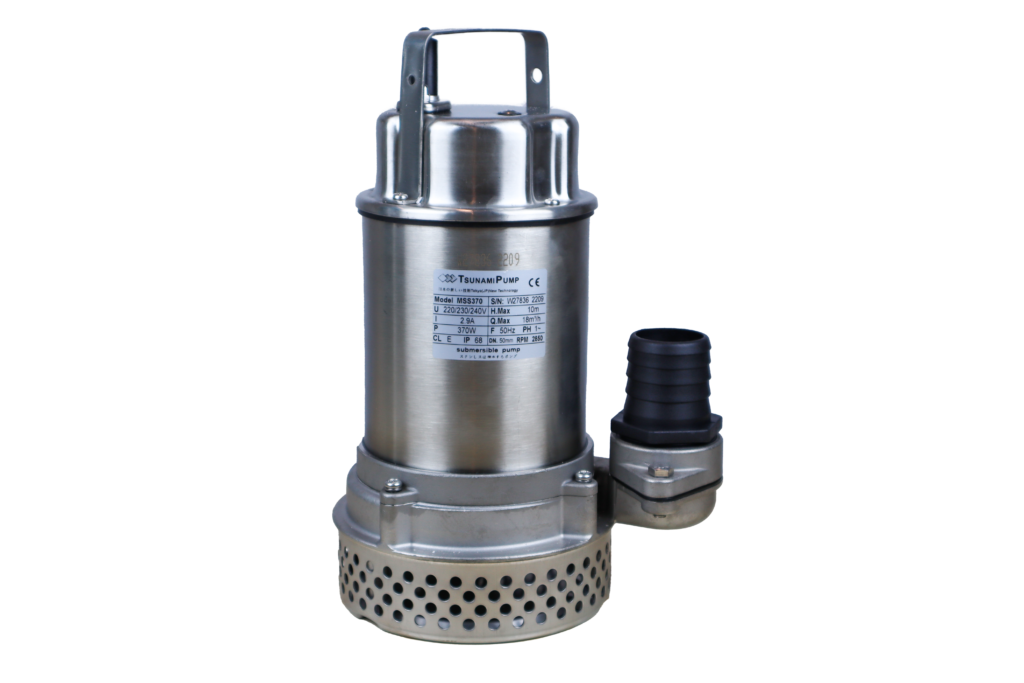How Reliable Submersible Sewage Pumps Can Mitigate Flood Issues in Malaysia

Malaysia’s Perpetual Flood Problem Flooding is an ever-present challenge in Malaysia, particularly in urban areas where heavy rainfall overwhelms drainage systems. Streets become rivers, infrastructure suffers costly damage, and communities are left to deal with sewage overflows and public health risks. These recurring floods disrupt daily life and expose the urgent need for more effective water management solutions. A Powerful Ally Against Floods – Submersible Sewage Pumps How can we effectively fight against flooding issues in Malaysia? Submersible sewage pumps are the way to resolve and manage flooding. A subset of the submersible water pumps family, these pumps are amplified and designed to handle large volumes of water while efficiently managing sewage overflow during heavy rainfall. Be it for urban drainage systems or construction sites, a well-integrated sewage pump system with submersible drainage pumps can provide the necessary strength to mitigate the worst impacts of flooding. How Does Sewage Pumps Work? A submersible sewage pump is the ultimate saviour for flood-prone areas. It’s designed to sit fully underwater, quietly doing its job of directing the flood and sewage water where it needs to go. When the water level rises, the pump activates, using an electric motor to drive an impeller. This creates suction, pulling water and any debris through a discharge pipe, preventing backups and messy overflows. Different situations call for different types of pumps: Submersible sump pumps are perfect for smaller jobs, like clearing water from basements or localized flooding. They handle moderate amounts of water and smaller particles with ease. Submersible drainage pumps step up when things get more serious. They’re built for higher volumes and larger debris, making them ideal for urban flood management or heavy-duty tasks like construction water drainage. Both types play vital roles in a well-designed sewage pump system, ensuring floodwater and sewage are managed efficiently during heavy rains. In Malaysia, where flooding is a persistent challenge, these pumps are a practical, reliable solution for keeping water levels under control. How A Reliable Submersible Sewage Pump Can Mitigate Flood When it comes to managing floods effectively, not all pumps are created equal. Reliable submersible sewage pumps have specific features that make them ideal for the job: Energy Efficiency: Modern pumps are built to move large amounts of water with minimal energy. With automated systems, they adjust flow rates based on water levels, reducing waste and ensuring efficient operation. Durable Materials: Many pumps, like those with stainless steel construction, are designed to resist corrosion. This makes them ideal for flood-prone environments where exposure to water and harsh elements is constant. Non-Clogging Impellers: These pumps are designed to handle debris like sticks, leaves, or small stones without getting jammed. This feature is especially useful in flood scenarios where drainage systems often carry more than just water. These features combine to make sewage pumps a long-term, reliable solution for keeping floodwaters at bay and protecting critical infrastructure. Sewage Pump Installation Cost Installation and Initial Costs The cost of installing a submersible sewage pump depends on several factors, such as: Pump Type: Basic submersible sump pumps are more affordable, while heavy-duty models like submersible drainage pumps may require a larger investment. Complexity of Installation: Factors like site preparation, piping requirements, and electrical work can add to the cost. Adding components like backup power systems or control panels will also increase expenses. Price Range: On average, water sewage pumps costs may range from RM2,000 to RM10,000 or more, depending on the scope, equipment and workmanship. Long-Term Savings While the upfront cost of a sewage submersible pump may seem significant, the long-term benefits are undeniable: Lower Maintenance Costs: Pumps with durable materials and non-clogging impellers require less frequent repairs, saving on labor and replacement parts. Energy Savings: Investing in energy-efficient models helps reduce electricity bills, especially for systems that run frequently during Malaysia’s rainy seasons. Extended Lifespan: High-quality pumps last longer, reducing the need for early replacements and minimizing disruptions caused by breakdowns. Source Benefits of Using Submersible Sewage Pumps in Flood-Prone Areas Rapid Floodwater Removal Submersible sewage pumps excel at quickly draining floodwaters from streets, homes, and other affected areas. Their efficiency helps minimize property damage, ensuring basements, streets, and structures don’t remain waterlogged for long. Prevention of Contamination and Health Risks Floodwaters in Malaysia don’t just damage property—they can lead to serious health issues like dengue fever. Stagnant water after heavy rains creates perfect breeding spots for mosquitoes that spread dengue. Using submersible sewage pumps to quickly remove floodwater and sewage helps reduce these risks, keeping public spaces cleaner and communities healthier during the rainy season. Protecting Urban Infrastructure By controlling water levels in streets and basements, these pumps relieve pressure on drainage systems, reducing stress on urban infrastructure. This helps prevent long-term damage to roads, foundations, and public utilities, prolonging their lifespan and saving cities from costly repairs. How Long Will a Submersible Drainage Pump Last? With proper care, the expected lifespan of a submersible drainage pump can last up to 15 years. Factors like material quality, operating conditions, and maintenance frequency play a key role in determining its longevity. Stainless steel models, for instance, offer better resistance to corrosion and wear, making them a durable choice for flood-prone environments. Maintenance Tips for Durability Regular Inspections: Check the pump’s condition periodically, especially before and during the rainy season. Look for signs of wear or potential clogs. Cleaning the Impeller and Housing: Clear debris to prevent clogging, which can strain the motor and reduce efficiency. Monitor Seals and Bearings: Replace worn-out seals and bearings promptly to avoid water leaks or motor damage. Test Before Peak Seasons: Run the pump periodically to ensure it’s in working condition, particularly before heavy rains are expected. Source High-quality submersible water pumps play a critical role in strengthening flood resilience. By efficiently managing floodwaters and sewage, these pumps protect properties, public health, and infrastructure from the devastating effects of heavy rainfall. The proper installation of


